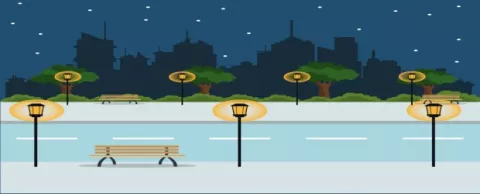
Back in 2013, smart lighting wasn’t a mainstream topic like it is today. The historic city of Helmond in North Brabant in the southern Netherlands, however, was one of the first cities to adopt intelligent lighting technology as a way to solve its challenges as a growing industrial hub, becoming more sustainable in the process by saving energy. In an effort to improve public safety—as well as the attractiveness of the city—Helmond has rolled out over a dozen intelligent street lighting networks over the past four years since. Let’s dive deeper into why this Dutch city decided to become a pioneer in the intelligent street lighting movement and some of the immediate benefits they’ve seen in the process.-Bruno De Man
Ways to save with smart lighting
Helmond is home to 90,000 residents and is quickly earning a reputation as a knowledge hub and living lab for the automotive industry where companies design, develop and debut new types of transport technology. Local authorities turned to intelligent street lighting as a way to make Helmond a smart city by saving energy and reducing its carbon footprint.
"Sustainability is important for us and that's why we’ve been looking for ways to save energy and reduce the CO2 footprint. Besides this, what we ultimately want is a liveable and safe city for everyone. That's why public lighting is so important—because people enjoy living in the city only when they feel safe and comfortable," explains Alfred Groote, Public Lighting Manager at the Municipality of Helmond.
After testing Tvilight CitySense, a wireless motion-sensing light control system, in a few locations, the city quickly started seeing benefits of connected lighting, such as safer roadways, residential neighbourhoods, pedestrian zones and bicycle paths. Since the amount of illumination is tailored to human presence in each area, this system can adjust the level of lighting based on time, road type and citizen needs—all of which are controlled, managed and monitored by Tvilight.
“Light on demand” is just stepping one when it comes to Helmond’s overall smart city strategies. Now with integrated smart sensors installed everywhere from public roads to parking lots, the city has developed a digital infrastructure that allows it to evolve along with citizens’ needs. In the future, the city can tack on additional applications such as noise-monitoring sensors; sensors that track traffic and weather conditions; and sensors that adjust light based on collected and analysed data. While saving energy, the city is becoming a more attractive place to both live and work, propelling its image as a “forward-looking visionary city” that has all the right framework in place for future Smart City developments.



